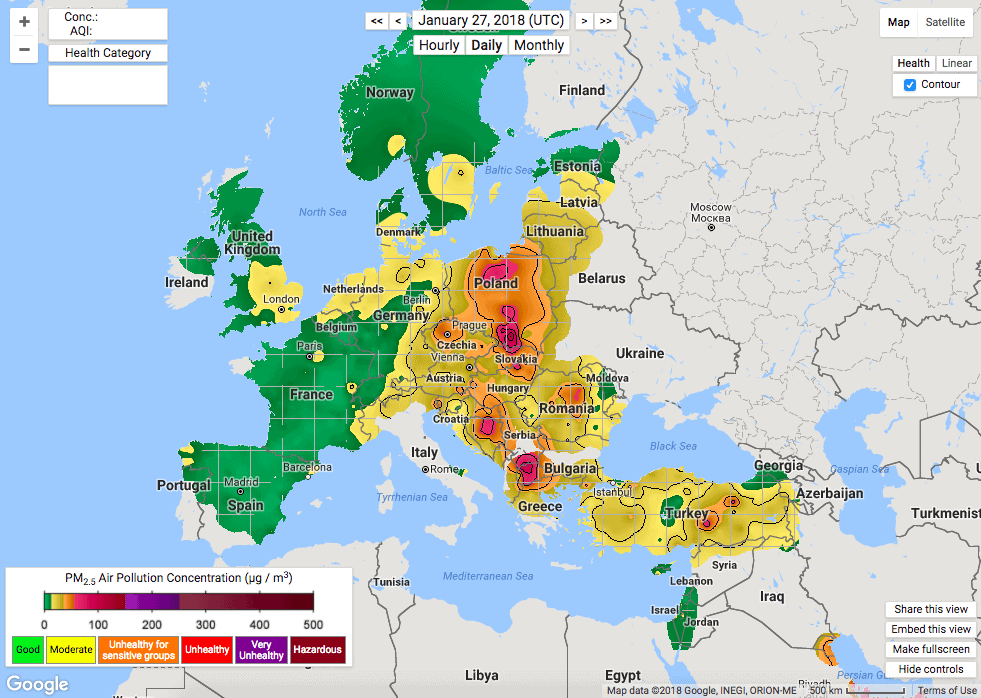As WWII drew to an end, the Nazis had not only lost control of all their previously occupied territories and allied states, but also much of their fatherland. Essentially cornered, the Third Reich was finally vanquished, reduced to a wasteland of dust, rubble and spilled blood.
After the war ended, the Soviet Union did something that was not all that surprising: as their troops and secret agents had infiltrated half of Europe all the way to Germany, they decided to keep control of all of these regions they “liberated” during the war as a matter of convenience. It’s said that the spoils of war go the victor, and the Soviet Union took this very, very seriously.
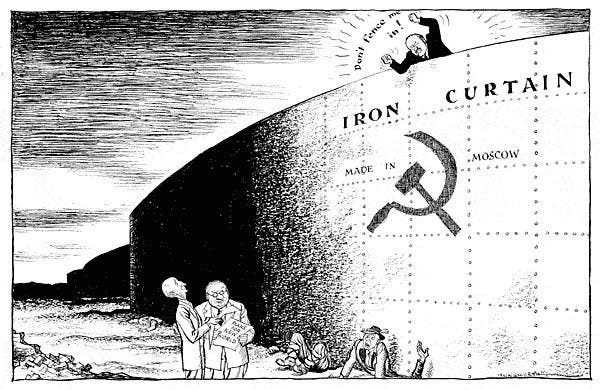
Entire countries — Poland, Czechoslovakia, Hungary, Romania and Bulgaria, to name a few — came under a veiled Soviet rule. At first, the Soviet Union tried to maintain appearances of freedom in these countries by holding alleged democratic free elections, but in reality, local communists were promoted under the close supervision of Soviet agents.
These Eastern European countries were effectively turned into puppet governments — extensions of the Kremlin. They had heavily guarded, controlled borders and information leaks to the West were very rare. By 1946, keeping up the appearance of democratic governments was useless — everybody realized that the Soviets had a secret agenda, and it was clear that these were now all Soviet states — the Soviet Bloc.
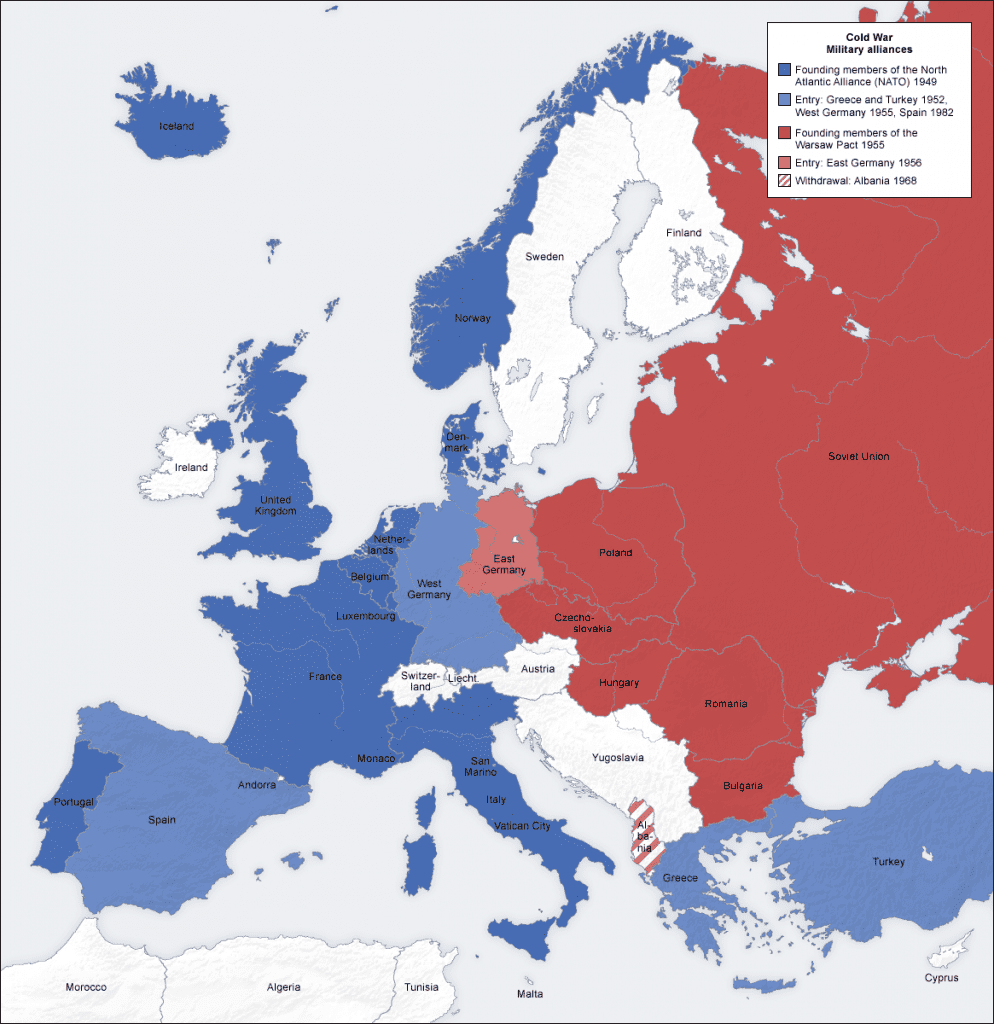
Tensions ran high between West and East. In March of 1946 Churchill visited the US and spoke at Fulton, Missouri about the rising threat of Soviet expansion and its perversion:
“A shadow has fallen upon the scenes [recently] lighted by the Allied victory. Nobody knows what Soviet Russia …intends to do in the immediate future, or what are the limits, if any, to their expansive tendencies. It is my duty to place before you certain facts about the present situation in Europe. From Stettin in the Baltic to Trieste in the Adriatic, an Iron Curtain has descended across the continent. Behind that line lie all the capitals of the ancient states of Central and Eastern Europe – Warsaw, Berlin, Prague, Vienna, Budapest, Belgrade, Bucharest and Sofia. All these famous cities are subject to a very high and increasing measure of control from Moscow… This is certainly not the liberated Europe we fought to build up.”
Contrary to popular belief, Churchill didn’t actually coin the term. Ethel Snowden, a British feminist, was likely to the first to use the term “Iron Curtain” in its current political and historical context all the way back in 1920 when she published a book called Through Bolshevik Russia, a very early and negative critique of the Bolshevik form of communism. Regardless of who coined the term or what you choose to call it, the reality is that a 4,000 miles long border running from Estonia in the north to Yugoslavia in the south effectively delimited the Soviet Union’s new influence. The Iron Curtain meant great riches for Mother Russia and much suffering for the occupied locals, and 26 years after the fall of the Iron Curtain and the dissolution of the Soviet Union, the ripples of its influence are still present.
Within this article, I included some maps that highlight its inglorious legacy. The fine line between causation and correlation can be blurry at times, but the influence of the prime red state is uncanny in each instance. East versus West in Europe is still felt today in terms of prosperity, health, and almost anything else you care to name.
Germany’s population change
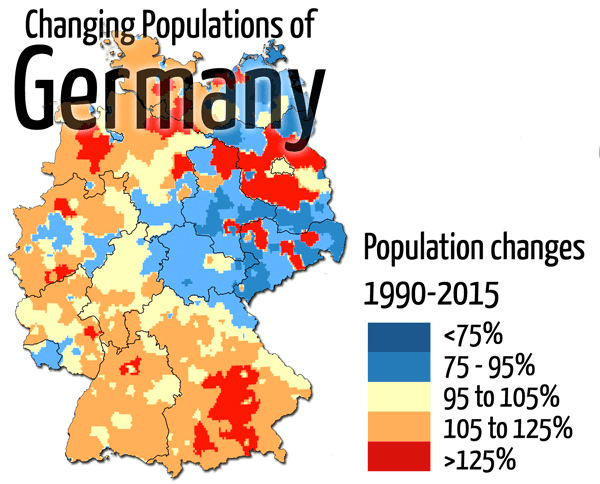
The colors of the map indicate the estimated population changes between 1990 (the year of unification) and 2015 (based on SEDAC population estimates). This color shows the expected change in 2015 compared to the year 1990. This is the result of a coupling effect between internal migration to the more prosperous west, and a demographic trend towards an aging population. Leveling the economic and demographic distribution of the country is still a huge challenge for Germany.
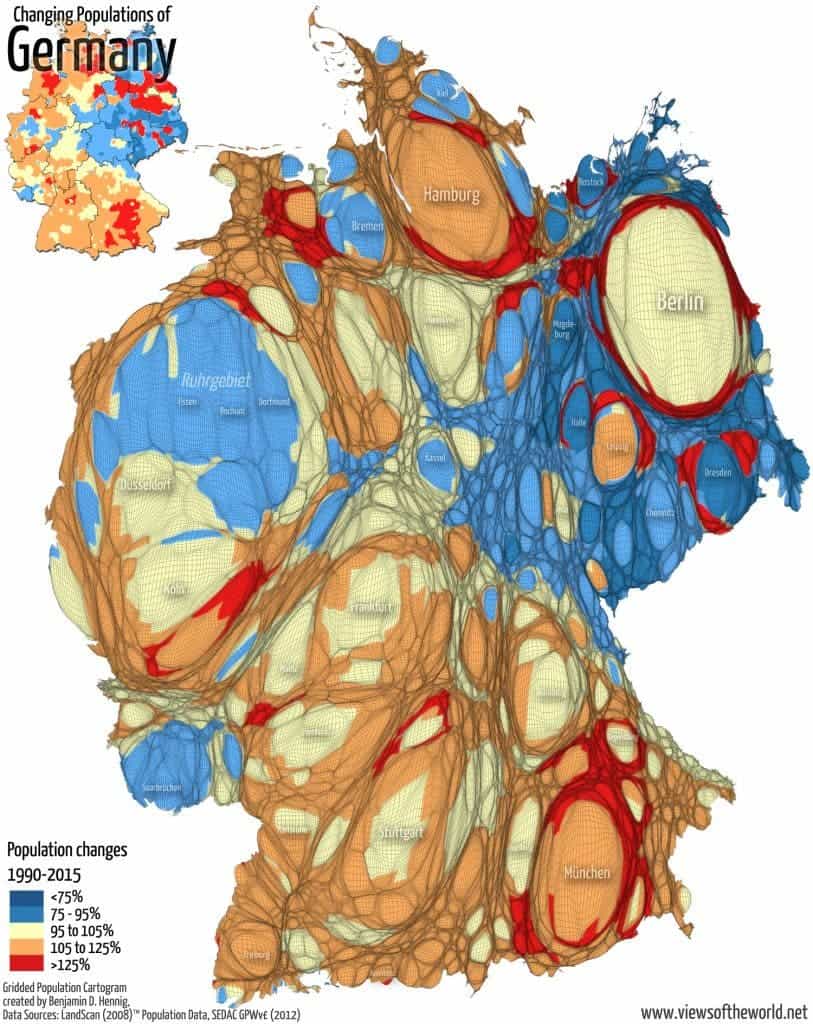
East and West Berlin as seen from space
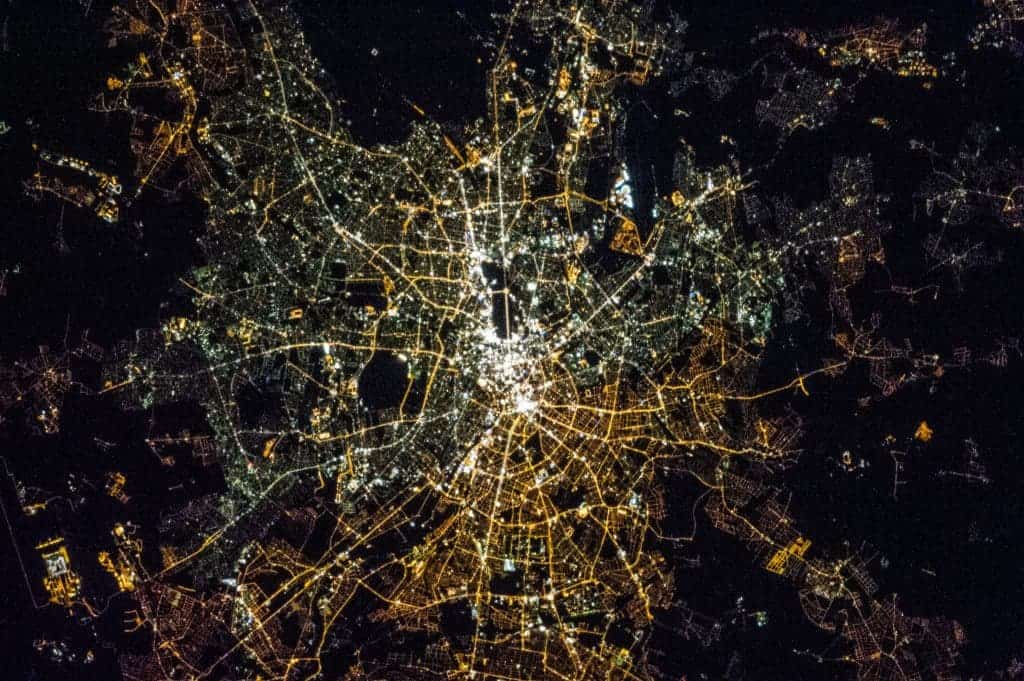
The contrast between East and West Berlin is so stark to this day that you can see the difference from space! This photo was shared by Canadian astronaut Chris Hadfield who made the shot on board the International Space Station. In the west, you can see bright white light around the government quarter in the heart of the city and the shopping districts, while the east has a softer yellow glow.
East Berlin still uses sodium-vapour lamps that give off a yellow hue, while Western Berlin uses fluorescent lamps that produce a white color. The western Federal Republic of Germany favored non-sodium lamps on the grounds of cost, maintenance and carbon emissions, according to Daniela Augenstine, of the city’s street furniture department.
“Berlin was divided into two parts for over 40 years,” explains Christa Mientus-Schirmer of Berlin’s city government for The Guardian. “And although we’ve made a lot of progress in the 20 years since the wall fell, we haven’t had the money we would have liked to equalise the two parts of the city.”
Europe at night
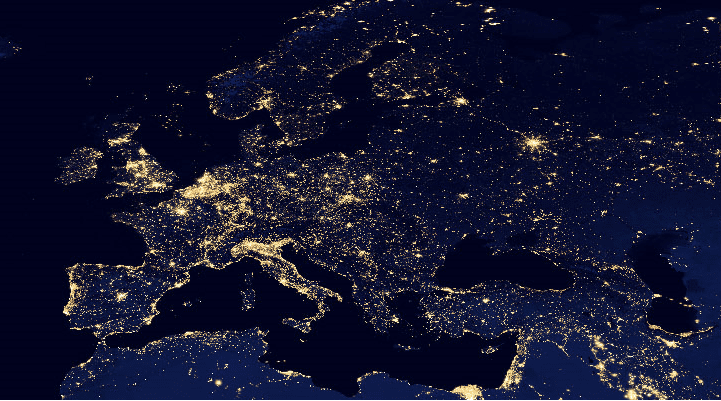
This shot shows Europe at night. You can clearly see how densely populated the western part of the continent is compared to the east. The Russian population is fantastically concentrated in just a few cities, most prominently Moscow and St. Petersburg, while western Europe seems to never sleep.
Economy and prosperity
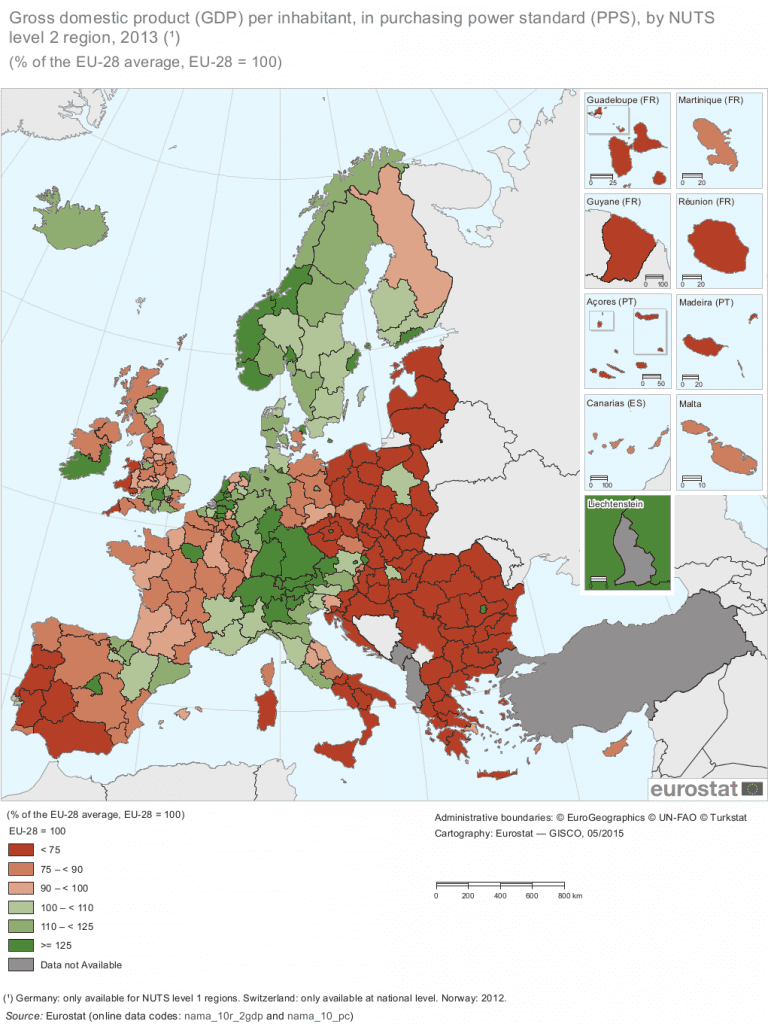
While the data showcased above is only available for European Union countries, it does a very good job at demonstrating the economic divide between west and east at a glance. In 2013, the GDP per capita for the Russian Federation was $14,612, while the that of Germany was $46,268 (roughly three times more).
Once the Soviet Union took control of much of Central and Eastern Europe, it began a campaign of plundering lasting more than 15 years — in some instances rivaling that of Genghis Khan. Besides official war compensations, the Soviet Union helped themselves to the raw materials and industrial resources of occupied nations. Grain, food, machinery, steel, coal and other items were seized and transported east to the Soviet Union. For many years, companies that were set up by the Soviets sucked the blood of Eastern Europe, with Romania and Hungary suffering the most.
“Valuable machines, and in numerous instances whole plants, were dismantled and removed to the Soviet Union. Grains and other victuals were seized in huge quantities. Almost one-half of the livestock was taken out of the country. Safe deposit boxes were forced open and their contents removed. Whether the property was private or public did not make any difference. Private homes, public warehouses, stores, government agencies and banks all received the same treatment. [The properties] of neutral powers, such as Switzerland, Sweden or Turkey were not spared,” reported André Kertész.
Ironically, a second massive wave of theft took place after the Iron Curtain fell. Left in dismay, former socialist states became a theater for massive theft at the hands of former key members of the state’s network. This age of kleptocracy lingers to this day.
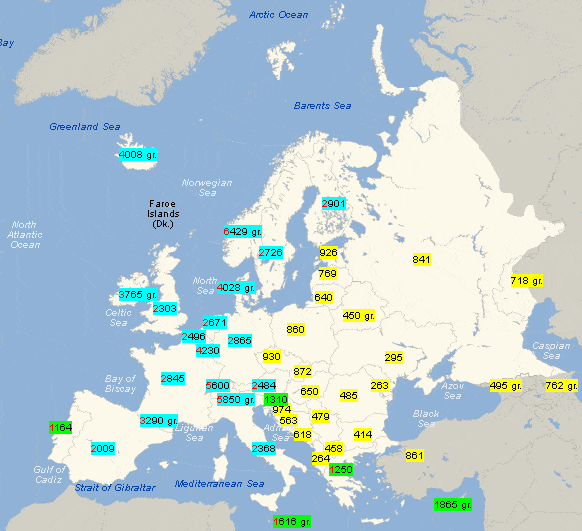
Science and Technology

It might be odd to look at internet usage and household prevalence, but the divide seems likely rooted in the economic struggle Eastern Europe faced under Communist rule, and the subsequent discrepancy in technological and industrial development.
That’s why you won’t find any electric cars in Eastern Europe.
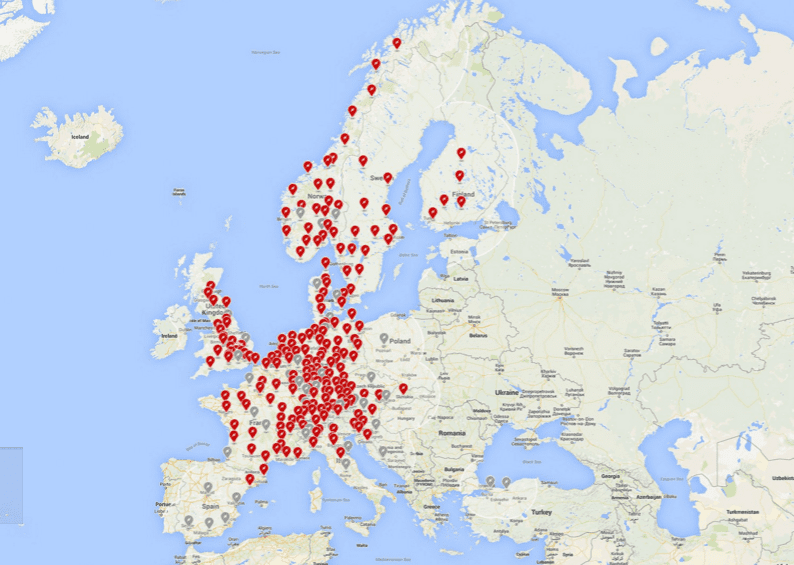
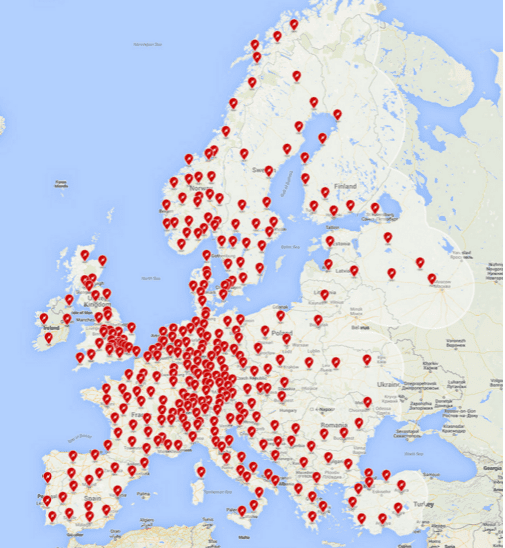
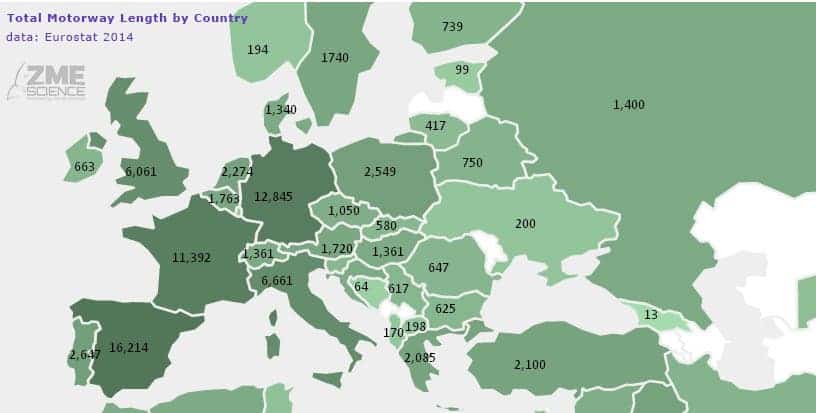
Happiness and fertility
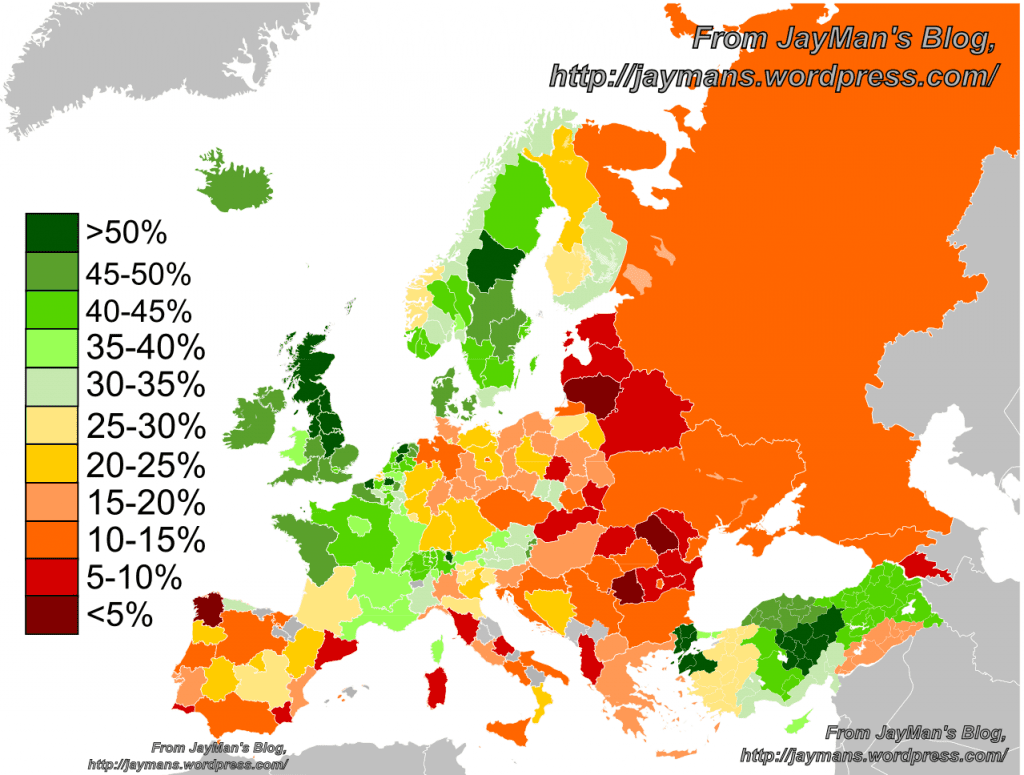
This map shows self-reported happiness across European countries. The data was collected from 2005 to 2008, and shows the percentage of people who reported being “very happy”. Overall, not that many are content with their lives, but the former Soviet Bloc looks like a massive basin of depression.
Closely tied to happiness, as well as economic well-being, is fertility. Despite a world population growth rate of 1.2% (according to UN data from 2010, revised in 2012) the old Europe has become true to its name with a growing aging populace. Never before have population rates been so low — usually below 10% — as well as having birth rates substantially lower than developing countries.

Health
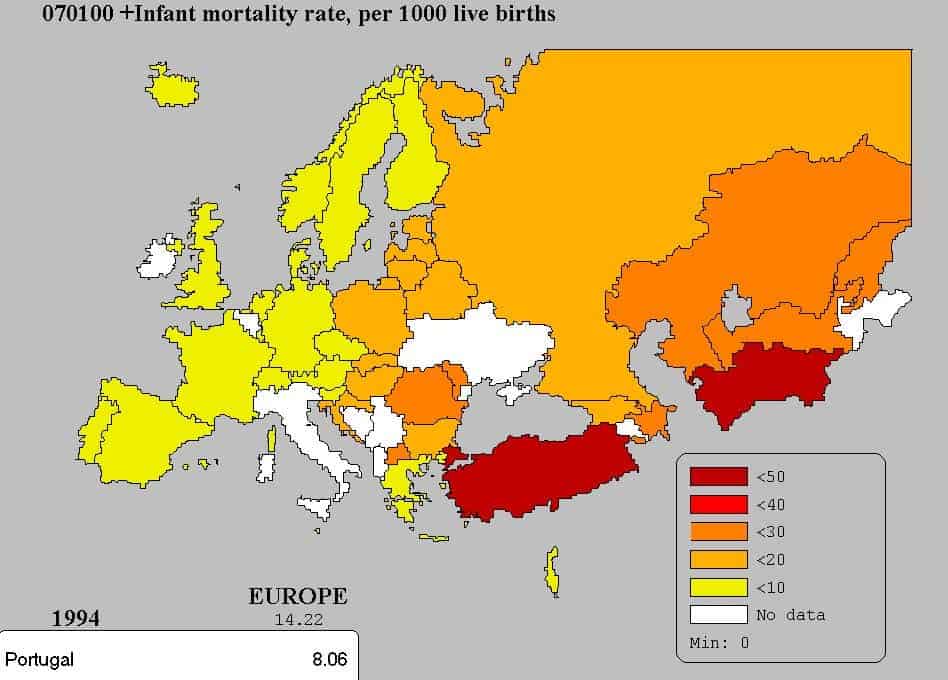
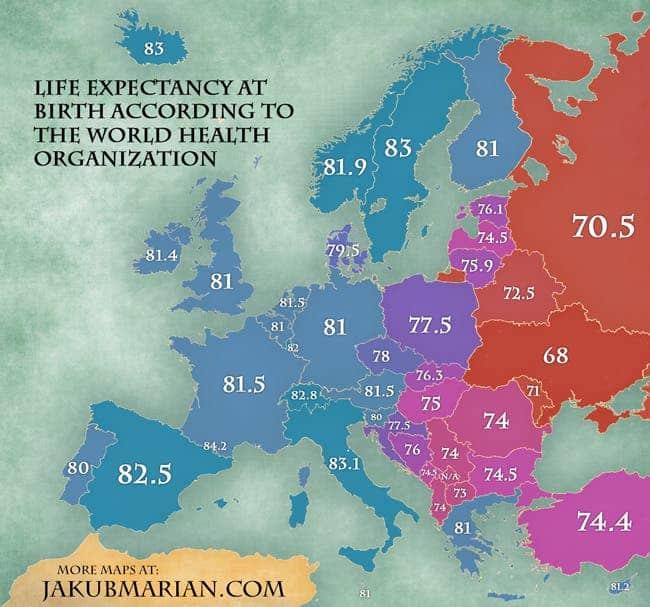
Human Rights and Justice
In totalitarian governments, human rights and civil justice are only matters of front — no one in the chain of command take them seriously. Soviet Bloc states were no exception, and after the Iron Curtain was raised, millions enthusiastically greeted the wave of change with hopes that the day had come when they were free and their rights would be respected.
In many instances, this was true — most notably with freedom of speech. However, even now the wealthy and powerful elite of Eastern European countries live outside the rule of law, while corruption permeates, ranging from low-level clerks to magistrates to even ministers.
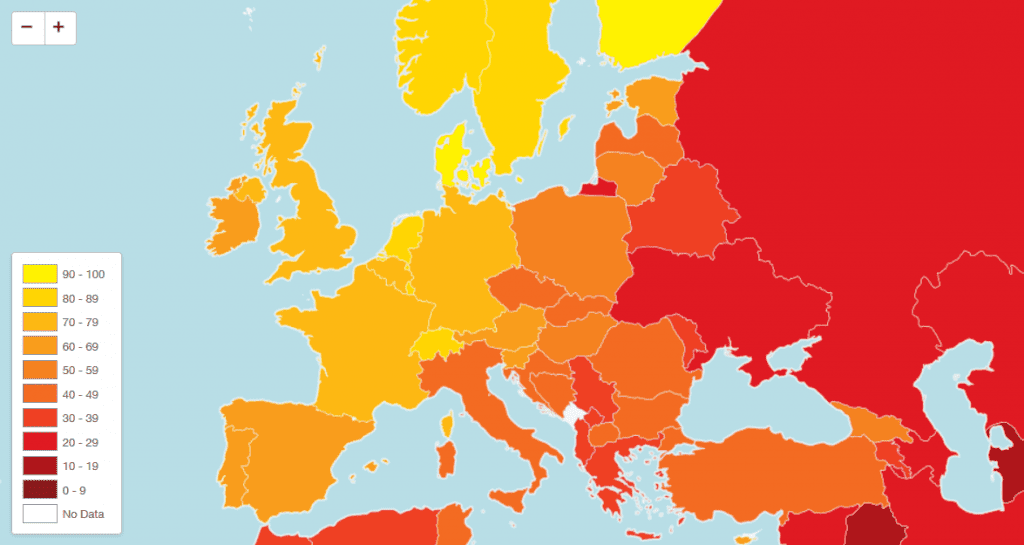

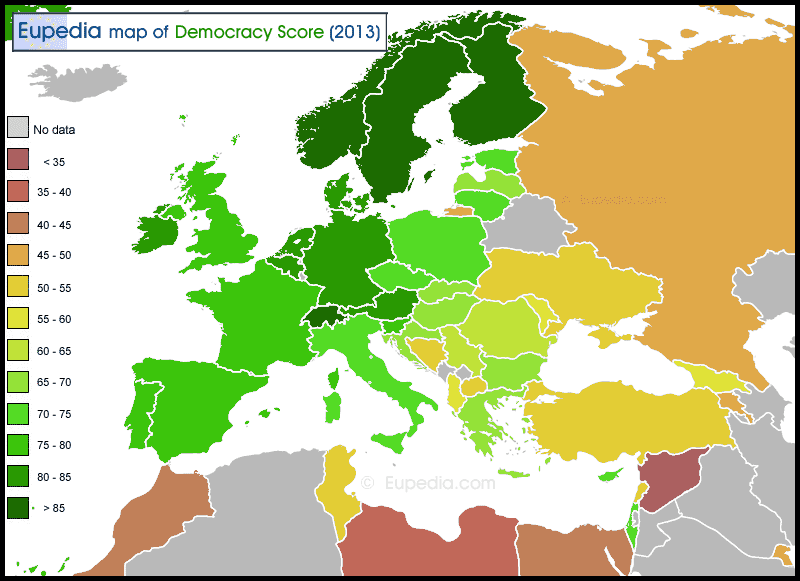
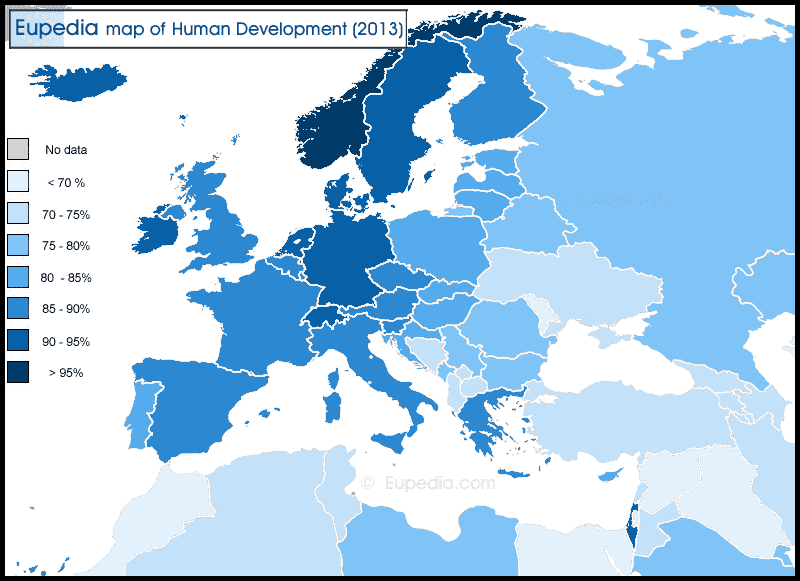
Migration

Above, we see a colored map showing the percentage of the total population in primary and secondary school. You might be wondering why this is relevant.
Simply put, it indicates that there are fewer young people in the east as a direct consequence of fleeing talent to the west. This trend is sure to continue as long as economic well-being and happiness stay at current levels. Before the Iron Curtain fell, these people were trapped. Now, these borders are dissolved and many chose to move elsewhere where they get paid better, can grow professionally and have better odds to raise a happy family.
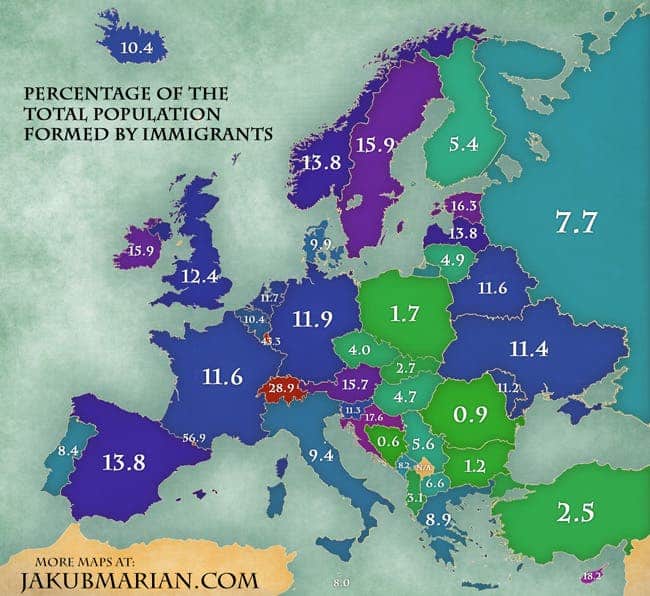
Can we bridge the gap?
It’s worth noting that colored maps like those from Eurostat do not show any divide between East and West in many fields, from agriculture structure to heart disease prevalence.
There are also many instances where the East and West would have likely been divided in terms of progress even if the Iron Curtain wasn’t in place. After all, Western Europe has been more advanced than the rest of the continent for hundreds of years. There are many instances, however, where the Iron Curtain effect is clear, i.e. East vs West Germany.
How long will the ripples of the Iron Curtain last? It’s hard to tell. Along with the U.S., Europe is one of the most globalized regions in the world. The European Union, with its mechanisms that allow for free migration, universal work permits, higher courts of law and financing schemes, seems to me like the most important thing that could bridge the East/West European gap.
Unfortunately, since the last major recession in 2008 and the massive waves of refugees from the Middle East, the old continent seems on the brink of division. It would mean a disaster and return to a status quo very similar to the Iron Curtain.
Please don’t let the E.U. die.
